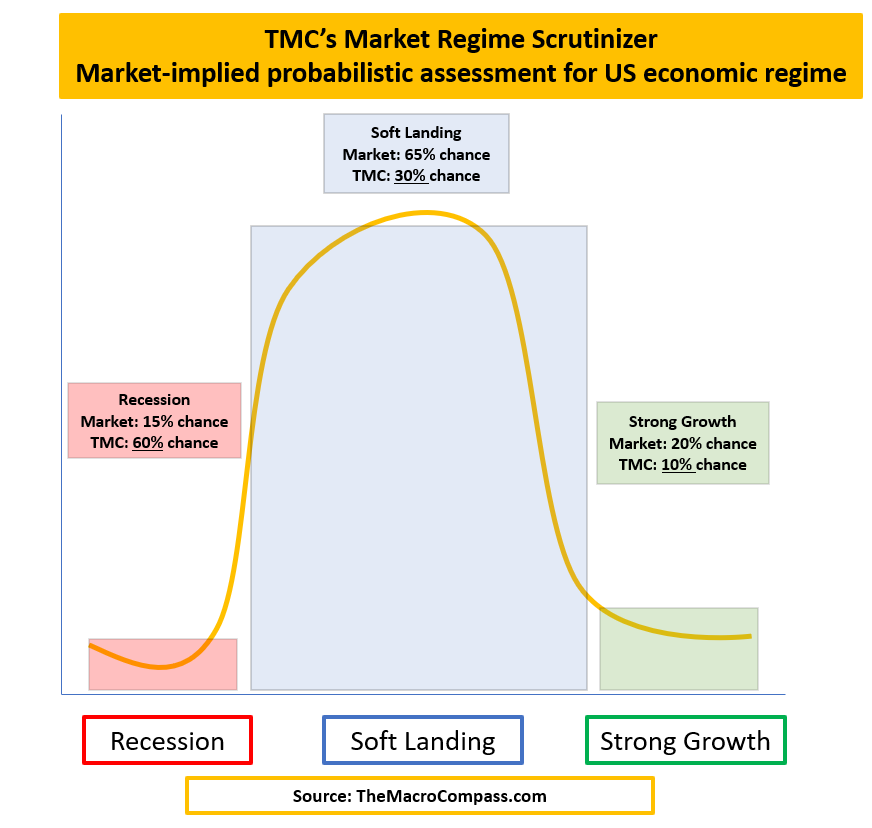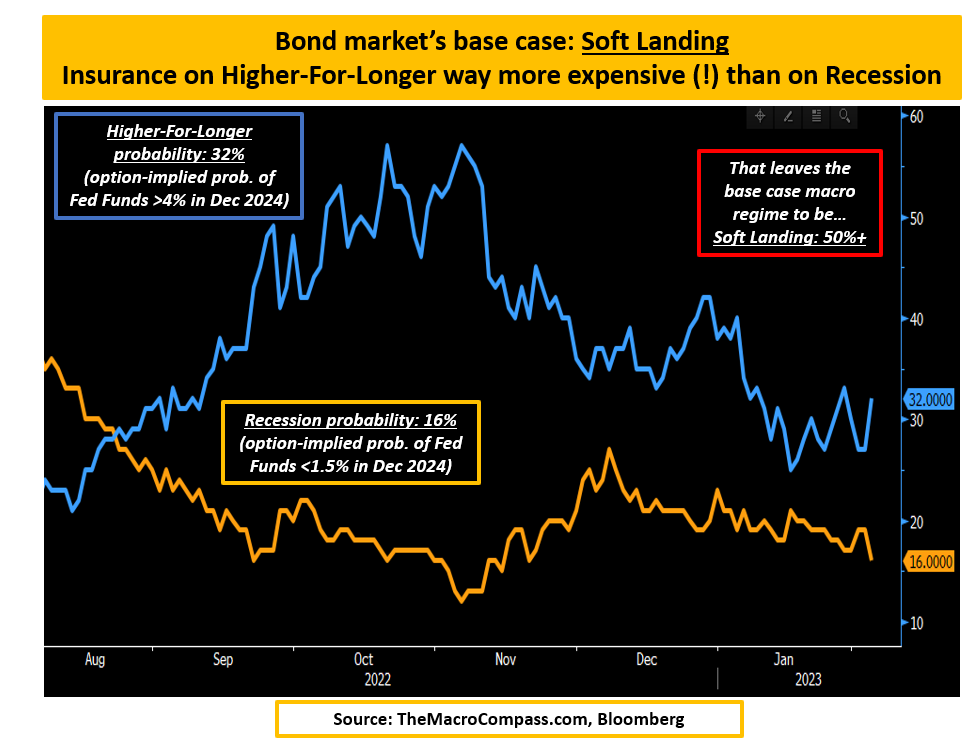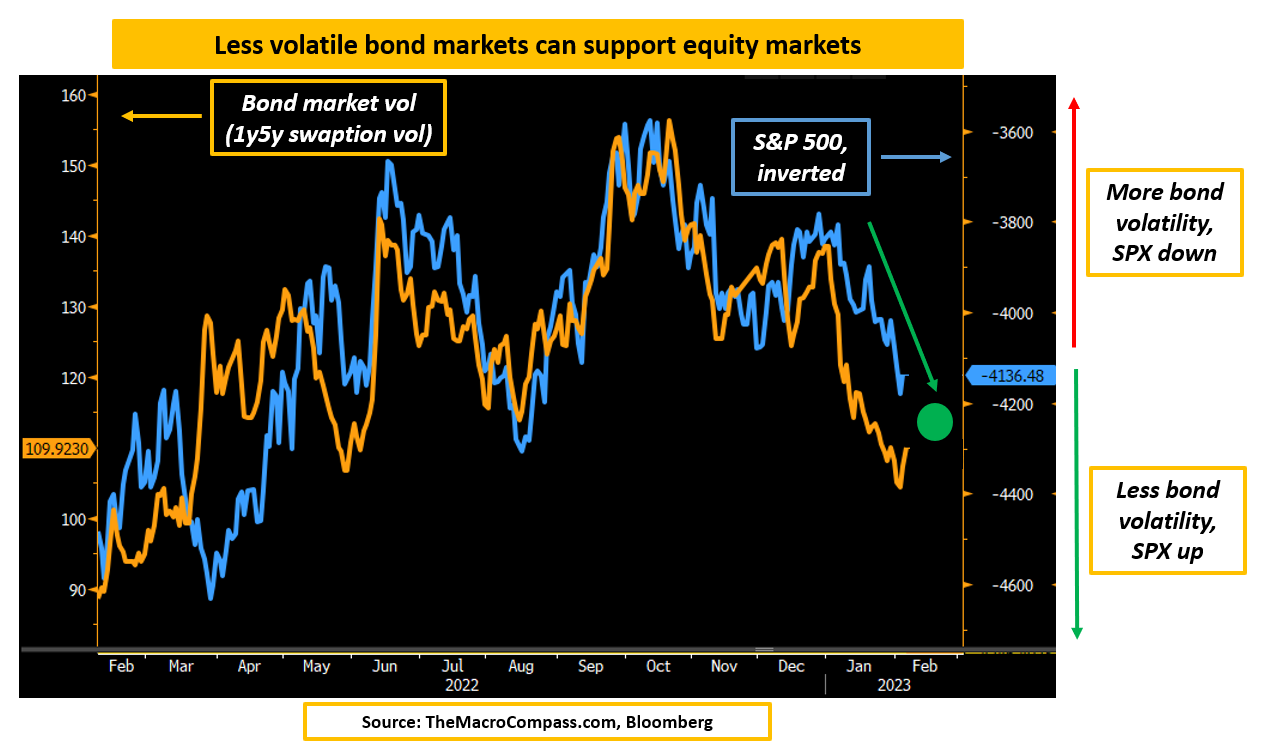Last week, FOMO (Fear Of Missing Out) became the prevailing market narrative.
As data seemed to further validate the soft landing narrative and central bankers became ‘’data dependent’’, markets are FOMO-ing like it’s 2019 again.
In 2019, the Fed pivoted hard and the economy managed a proverbial soft landing. The 2018 hiking cycle which Powell abruptly reversed with his early 2019 pivot slowed the economy down, but not nearly enough to result in a hard landing.
The S&P 500 earnings growth was only +0.6% (but not negative), core inflation was stable around 2%, and the US added 160K new jobs per month: low nominal growth, but not a recession – in other words, a soft landing.
But 2023 isn’t 2019 – for many macro reasons, we are going to touch upon.
First, let’s picture the current market regime.

The chart above shows TMC’s Market Regime Scrutinizer. It measures the market-implied odds assigned to a US recession, soft landing, or strong growth regime ahead.
It is derived by scrutinizing option markets in fixed income, equity, and currencies and blending the resulting market-implied probabilities in this flagship TMC indicator.
Markets are currently pricing a US soft landing as the dominant probabilistic regime (~65% probability), and in recent weeks the left recessionary tail has been aggressively priced out (now ~15%) while the chance of a strong growth regime ahead has been bumped up to ~20%.
Even after the apparently very hot labor market data and ISM services, the bond market keeps screaming immaculate disinflation/soft landing as the main regime ahead.
-
Inflation is priced to drop to 2.5% by year-end, and stay close to 2% in the long run;
-
Fed ‘’soft landing’’ cuts are priced in as inflation slows down but without a recession, the Fed can gently cut rates to neutral levels (2.50-2.75%) without resorting to recessionary cuts or being forced to keep rates higher for longer.
Bond markets assign only a ~15% probability to recessionary cuts, and a ~30% chance to Higher-For-Longer Fed Funds amidst strong growth and sticky inflation.
As a result, the option-implied market points to a ~55% probability of a disinflationary soft landing.

When a disinflationary, immaculate soft landing becomes the dominant market regime it’s all about selling insurance and getting paid while…well, not much happens and the Fed is on a very predictable path.
And indeed, as the Fed is assumed to be on a more predictable path ahead, bond volatility is getting crushed.
Lower bond volatility is leading to much better risk sentiment in equity markets.

***
This article was originally published on The Macro Compass. Come join this vibrant community of macro investors, asset allocators and hedge funds - check out which subscription tier suits you the most using this link.
